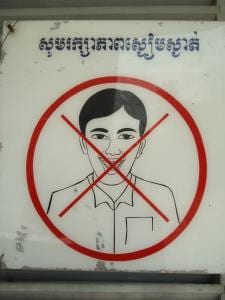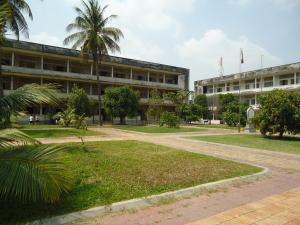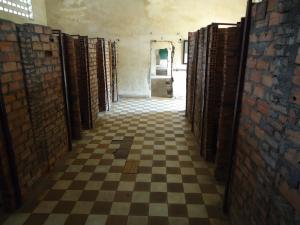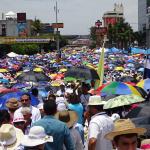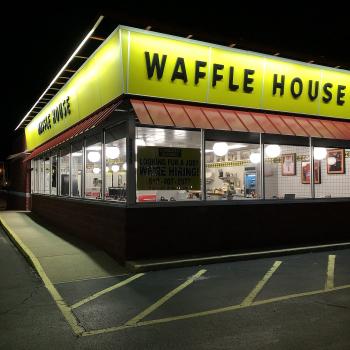I have only seen a sign forbidding visitors to smile or laugh in a public place once in my life. The site had no guards actively enforcing the rule, but the simple recounting of the horrific acts that unfolded at the site was enough to keep a person from smiling. What horrible thing could have happened in a place that forbids smiling and laughing?
The Tuol Sleng Genocide Museum was built as a high school in Phnom Penh, Cambodia, and in 1975 the ruling regime, the Khmer Rouge, converted the school into Security Prison 21 (S-21) to detain and torture high proile citizens suspected of anti-government activities. Over the span of four years, approximately 17,000 people were held in the prison and executed in nearby fields now called “the Killing Fields.” Pol Pot’s regime forced citizens out of cities in hopes of creating an agricultural utopia governed by a classless, atheistic, rural and communist society.
Estimates vary on how many Cambodians were killed during the reign of the Khmer Rouge, but numbers range between two and three million. People with a college education, those who wore glasses or spoke a foreign language were executed. Those who did not work due to a lack of agricultural training, any type of handicap, or old age were also killed.
This reign of terror continued until the communist Vietnamese government invaded Cambodia in 1979. The Khmer Rouge leadership retreated from Phenom Penh and continued to rule part of Cambodia with the recognition of the United Nations for several years. Pol Pot died in 1998 while under house arrest by a faction of the Khmer Rouge. He never faced the consequences of his terrible deeds in this life.
The S-21 Prison, located in downtown Phnom Penh not only recounts the painful history of Cambodia, but stands as a witness to the horrors human beings are capable of committing. Seeing the portraits of every prisoner, then seeing the place where the pictures were taken, and finally seeing portraits of the dead (taken to prove they had been killed) was disturbing to say the least.
A visit to Tuol Sleng Genocide Museum allows you to walk inside the small brick cells which were built for high profile prisoners and see still painted on the wall numbers which corresponded to the key of each cell. It seems as if just last week prisoners were kept in these inhumane conditions and now the prison had been opened to the public. The museum has not been manicured for tourists, but rather presents what happened in a raw manner. Blood stains can still be spotted on the tile floors.
The story of Cambodia and the rule of the Khmer Rouge is not very well known by younger generations today, yet it is a significant piece of recent history. Unfortunately atrocities such as this one are not isolated events of history or the present day. A confused German tourist approached us asking how the visit to the museum worked. He left us confused when he stated that he considered the actions of the Khmer Rouge considerably worse than the actions of Nazis. Encountering such atrocities is a reminder that in every age, humanity is in need of a Savior to lead us out of the darkness into the light where every human life is respected and where men and women live as true brothers and sisters.
Pictures are mine, all rights reserved.


